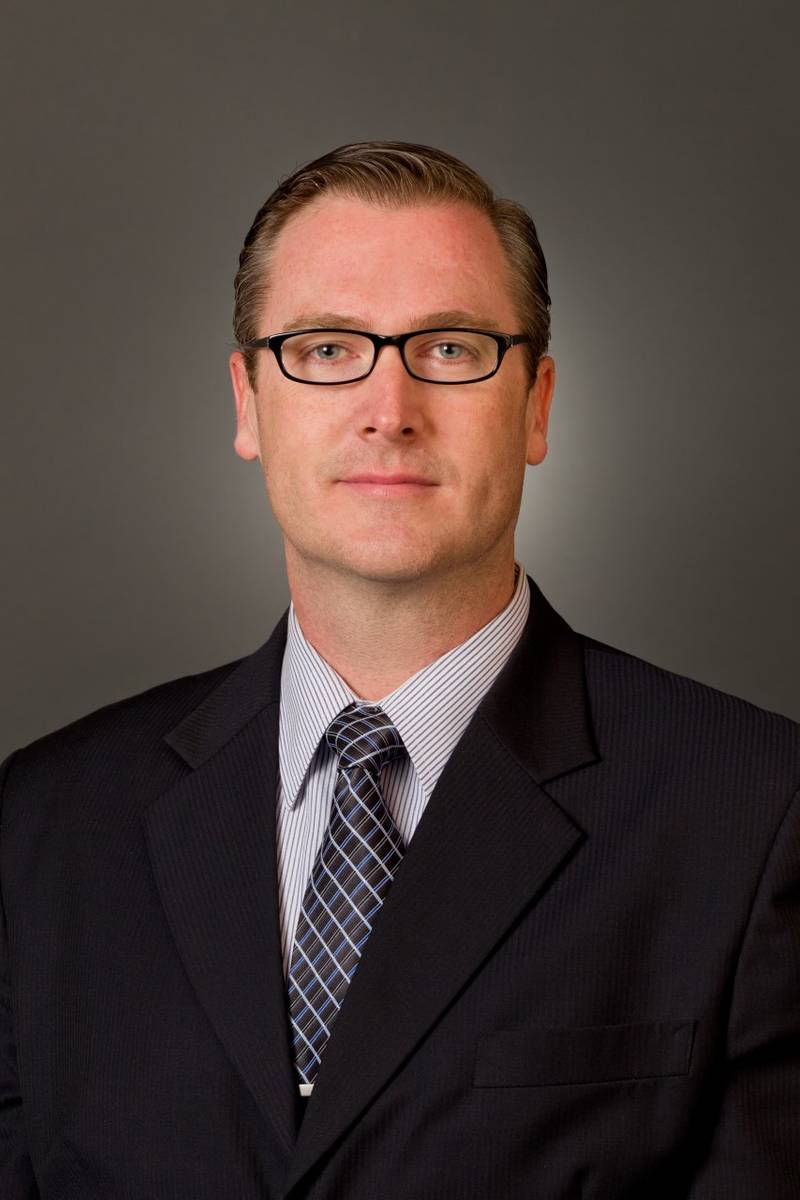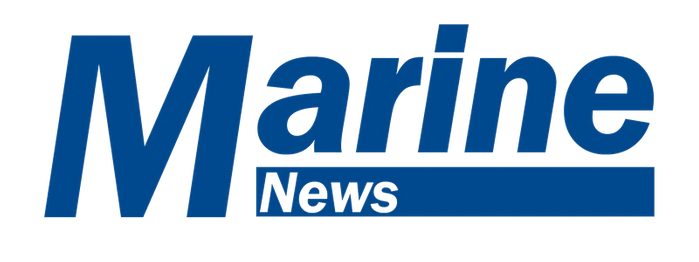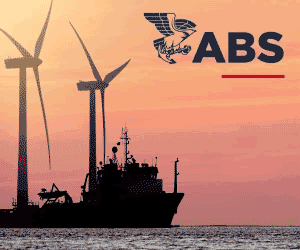Insights
Greg Lennon, Vice President of Global Offshore Wind, ABS
Greg Lennon, VP, Global Offshore Wind, ABS
The U.S. offshore wind sector is getting ready to fire on all cylinders, and Greg Lennon, Vice President of Global Offshore Wind with ABS, explains how various pieces – including the financial instruments to fund new vessels and whole projects – are falling into place.
By Greg Trauthwein
New to classification as of September 2021, ABS’ new head of global offshore wind delivers a powerful pedigree from the energy and offshore wind markets. Greg Lennon, ABS’s Vice President of Global Offshore Wind, delivers a powerful one-two punch in the energy and offshore wind markets with more than 20 years of experience in wholesale power generating as well as renewables. “Specifically, I’ve been in the offshore wind sector for over 12 years,” Lennon said in a recent interview. “While I was at a company called NRG, we acquired a company called Bluewater Wind and they had a lease area off of Delaware. That lease area is now Skipjack Wind Farm controlled by Ørsted. So, we had spent time developing that project 12 years ago. At that time, turbines were about just under 3 megawatts (MW) in size, today we’re talking about 15 MW turbines.”
Domiciled in New Jersey, Lennon also spent two years at the New York Power Authority, searching for a way to move offshore wind forward south of Long Island, a lease area that eventually went to auction and that’s now controlled by Equinor BP – the Empire Wind Project.
A booming U.S. market
So when Lennon opted to make the move to ABS, he saw a horizon filled with opportunity, premised by the Biden administration’s goal of 30 gigawatts (GW) of offshore wind power in development by 2030. The last two months, in particular, have been busy. “Since you and I last met in November (2021, at the ABS Offshore Wind Conference in New Orleans), 3.2 GW have been announced from Maryland and Massachusetts, making it just over 25 GW of contracted certainty for the market.”
In addition, the state of New York announced a $500 million commitment for further infrastructure investments, and that can also be directly related to supply chain, port infrastructure and education. Meanwhile on the West Coast, Oregon announced its 3 GW study to commence this year, in 2022, with California announcing that its mandate will be defined by mid-2022, a pair of moves that promises to help fast-track the concept of floating offshore wind.
“Finally, I think the most important thing is the Bureau of Ocean Energy Management announced its auction for six lease areas off of the New York-New Jersey; the Bight Area,” Lennon said. “That has established a significant commitment for lease areas to be built upon that eventually could be utilized and bid into those power purchase agreements. So, it’s that project certainty of process, project certainty of scale and commitment for power purchase agreements that has really led the significant market signals that this is an industry that’s here, and it’s (an industry) moving forward significantly.”
Photo: ABS We are going to see a significant increase in the number of vessels needed to install these projects in service from the various ports along the east coast here in the U.S. Greg Lennon, VP, Global Offshore Wind, ABS
Field of dreams
While the offshore wind field developers continue to build, plot and plan the evolution of massive offshore wind farms, questions still surround the size, shape and origination of the fleet of vessels that will be needed to install and service the fields. In the U.S., implications of the Jones Act will play a central role, and a key concern for many years has been the ability to build out the domestic fleet and/or hire the foreign fleet of ships that will play a key part in a seamless start for the industry, from foundation install to first energy.
“These are good problems to have, and the market will respond,” Lennon said. “We’re going to have a number of projects that are going to be receiving their final permits in mid-2024 to 2026 or so, built based upon their progress from environmental assessments to power purchase agreement securitization. And that’s going to lead to a number of projects coming and the demand for vessels to service the construction of those projects. So, we are going to see a significant increase in the number of vessels needed to install these projects in service from the various ports along the east coast here in the U.S.”
While there have been sporadic orders to date for the new U.S.-built Jones Act fleet, the volume of new orders needs to ramp up significantly, and soon, to ensure that projects planned and permitted become projects under construction and timely completion. The complexity of the problem extends far past the Jones Act itself and the inherent higher costs of building in U.S. yards, a problem that really boils down to vessel and project finance.
“With all these different types of vessels, ultimately, it leads to new challenges on vessel financing,” Lennon said. To that end, ABS has been engaged in discussions with key stakeholders, including the federal government, including the DOE Loan Program Office, to look at helping to step in and finance some of these vessels. “ABS is bringing key stakeholders together and helping get the (DOE) Loan Program Office message out in support with the National Offshore Wind Research Development Consortium (NOWRDC). NOWRDC is directly supporting the DOE Loan Program Office. We are partnered with NOWRDC in getting that message out on the Loan Program Office capabilities, because they have the loan guarantee program and the financing capability that not only applies to vessel finance, but it also applies to offshore wind projects.” Ultimately, Lennon sees natural market forces mixed with government involvement and some finance creativity as well as increasing “revenue certainty” for vessels as the key to take U.S. offshore wind from a jog to a sprint.
“More vessels are needed, and while creative financing may come around to help close the gap on challenges in vessel financing, the problem on larger vessels, in a simplified level, is that matching the certainty of revenue with the payback period to recover those initial investments is still a challenge.”
For example, wind turbine installation vessels (WTIVs) are usually on site for a lease contract, one to two years, dependent upon the size of the project and the scope in the operating conditions. “We’re talking about $500 million vessels, and you’re not going to recoup $500 million in those first two years. So, I think there’s an opportunity for the investment industry to come forward,” Lennon said.
He said the WTIV under construction now at Keppel AmFELS for Dominion is contracted for its first few years, and “it’s a unique case where the regulated utility of Dominion Energy and Ørsted have worked together to provide certainty for that revenue for that type of vessel.”
In the end, it comes down to revenue certainty premised on the project pipeline. “This contractual obligation, these projects have an underlying certainty and revenue. It’s the vessels that will move from one project to the other, we have to figure out how to allocate that risk and enable the support for closing the costs.”
The $500 million Charybdis will be the first WTIV ever built in the United States. It will also be one of the largest globally. Designed by NOV’s GustoMSC, Charybdis is being constructed at the Keppel AmFELS shipyard in Texas and is expected to be available to support U.S. offshore wind construction projects from 2023.
The path ahead
“So, I think we’re at the very start right here. We have the right people in the room. We have the right capability. The industry has responded before. And so, I think we have the opportunity here this year to solve this problem. And once we get the first vessel financed beyond what Dominion had done, and we can finance a larger scale wind turbine installation vessel, look at some of the service operating vessels, a portfolio approach perhaps. Maybe we’ll look at an asset fund. There are opportunities in the financial markets that can be brought in to solve this type of challenge, given that there’s revenue certainty on the projects on the whole.”
Through it all, Lennon sees ABS as ideally placed to help all offshore wind stakeholders navigate some of the biggest challenges ahead. “The American Bureau of Shipping knows the vessel owners; we know the shipyards; and with our offshore wind team, we know the developers now, too,” Lennon said. “We’re bringing everybody together, and also, with a number of other key stakeholders, we’re bringing investors, pension funds, private equity and the government to talk about how we can look at financing these vessels to close that gap.”



